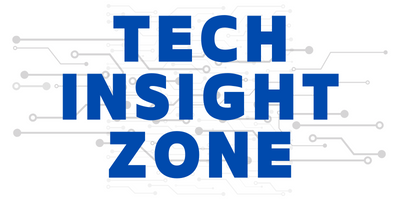IBM has introduced a groundbreaking innovation in optical technology that could dramatically transform data center performance, enabling faster and more energy-efficient training of generative AI models. Announced on December 9, 2024, the new co-packaged optics (CPO) technology replaces traditional electrical interconnects with high-speed optical pathways that operate at the speed of light.
Currently, copper wires in data centers handle communication between chips and servers. These wires are limited in speed, consume significant amounts of energy, and lose signal quality over distance.
IBM’s CPO technology addresses these limitations by employing polymer optical waveguides (PWG), a cutting-edge method that uses light to transmit data instead of relying on slower, energy-intensive electrical wiring. By improving how chips, servers, and circuit boards communicate, IBM’s technology minimizes the delays and energy waste that often hinder large-scale AI operations.
The technology also enhances what’s known as “beachfront density,” increasing the number of optical fibers that can be connected to a single chip. IBM has achieved six times the fiber density of existing optical technologies, allowing chipmakers to integrate up to 128 optical channels on a single module.
Think of it as replacing slow and bulky copper wires with super-fast fiber optic connections.
Key Highlights of IBM’s Optical Breakthrough
1. Energy Efficiency:
Traditional electrical interconnects in data centers require substantial power, particularly for high-bandwidth tasks like AI training. IBM’s CPO technology reduces energy usage by more than five times, consuming less than one picojoule per bit compared to the five picojoules needed by current mid-range systems. This reduction can significantly lower operational costs for data centers, making AI training more scalable and sustainable.
2. Faster AI Training:
Large Language Models (LLMs), such as GPT-4, often take months to train using current technologies due to the bottlenecks in data transfer between GPUs and servers. IBM’s innovation eliminates these delays by boosting data transfer speeds, enabling developers to train models in just weeks instead of months. The time savings grow exponentially with larger models and more complex training tasks.
3. Bandwidth Boost:
Data center chips increasingly require rapid communication to handle AI’s expanding computational demands. IBM’s CPO technology offers up to an 80-fold improvement in bandwidth for chip-to-chip communication, ensuring data flows seamlessly even in the most demanding AI environments.
Practical Impacts on AI and Data Centers
Data centers are the backbone of the digital world, housing vast arrays of servers and GPUs that power everything from cloud computing to advanced AI. While fiber optics have revolutionized external data communication, internal systems often rely on copper wiring that struggles to keep pace with modern demands.
Copper-based systems not only consume more energy but also limit the distances over which data can be transmitted efficiently. IBM’s CPO technology bridges this gap by integrating high-speed optical pathways directly into the data center’s infrastructure. This allows for faster, more reliable communication between components, significantly reducing GPU idle times during distributed AI training processes.
The extended cable lengths—up to hundreds of meters—offer greater flexibility in designing data center layouts, enabling better resource utilization.
Is It Ready for Real Use? Or, This is Just the Beginning?

Adopting new technology requires it to withstand real-world conditions. IBM has addressed this by subjecting its optical modules to rigorous stress tests. These tests exposed the modules to high humidity, extreme temperatures ranging from -40°C to 125°C, and mechanical durability assessments.
The modules successfully passed all evaluations, proving their reliability under demanding conditions. Additionally, the components were assembled using standard manufacturing processes, ensuring they can be produced at scale without requiring specialized facilities.
IBM has even demonstrated the feasibility of stacking multiple PWGs, paving the way for up to 128 channels of connectivity at pitches as small as 18 micrometers. This compact design is critical for maintaining high performance in densely packed data center environments.
However, we have to wait till all the other tech giants research this new tech and start adopting this.
A Step Toward Scalable AI
IBM’s latest optical breakthrough with co-packaged optics (CPO) technology represents a substantial advancement in data center performance. By replacing traditional electrical interconnects with high-speed optical pathways, IBM is setting a new standard for speed and energy efficiency, specifically tailored for AI workloads.
This innovation addresses key challenges like latency and power consumption, enabling faster and more efficient AI model training.
Meanwhile, Intel’s recent developments, which include the use of innovative materials like ruthenium and ultra-fast chip assembly methods, are also pushing the boundaries of chip technology. Intel’s innovations aim to make computer chips faster, more efficient, and better suited for AI applications.
These parallel advancements highlight the industry’s drive towards more capable computing architectures that can handle the increasing demands of next-generation AI tasks.





